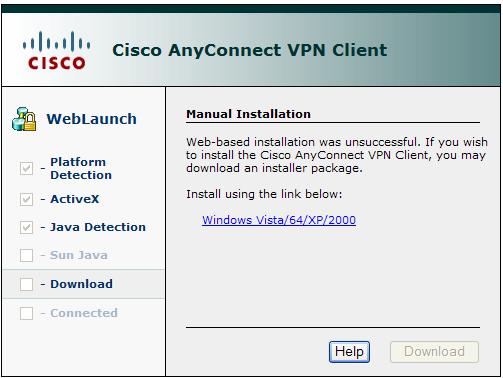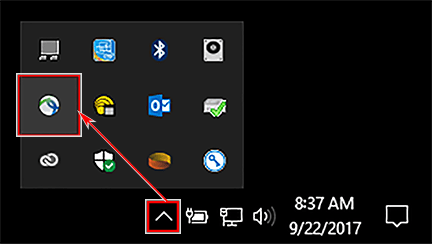AnyConnect 4.6.-02-27. New in AnyConnect 4.7.00142: The Network Visibility Module (NVM) included in this version of the Cisco AnyConnect Secure Mobility Client for Android has better support for Android O and later versions of Android. Fixes crash on Asus x86 devices. Improvement for sporadic ANR and app launch issues on some devices. For example, with Windows, go to the folder containing dartcli.exe (C: Program Files Cisco Cisco AnyConnect Secure Mobility Client) and enter dartcli.exe -u or dartclie.exe -udid. Collect Logs to Gather Data for Install or Uninstall Issues (for Windows).
Overview
A vulnerability in the interprocess communication (IPC) channel of Cisco AnyConnect Secure Mobility Client for Windows could allow an authenticated, local attacker to perform a DLL hijacking attack on an affected device if the VPN Posture (HostScan) Module is installed on the AnyConnect client. This vulnerability is due to insufficient validation of resources that are loaded by the application. The behavior we're seeing is specific to Windows 7. When testing from Windows 10, we do not experience these issues. When either of the patches are installed, users need to try to connect multiple times before they are prompted to enter their passwords. Usually it fails saying ' Failed to get configuration from AnyConnect client process. To use the program type in “Cisco” in the Windows Start menu and click the “Cisco AnyConnect Secure Mobility Client”. The 'Cisco AnyConnect Mobility Client' window will pop up. Make sure your box contains “nmuvpn5520.nmu.edu” as shown below. Click 'Connect' and you will be brought to the NMU login page again.
Stanford's VPN allows you to connect to Stanford's network as if you were on campus, making access to restricted services possible. To connect to the VPN from your Windows computer you need to install the Cisco AnyConnect VPN client.
Two types of VPN are available:
- Default Stanford (split-tunnel). When using Stanford's VPN from home, we generally recommend using the Default Stanford split-tunnel VPN. This routes and encrypts all traffic going to Stanford sites and systems through the Stanford network as if you were on campus. All non-Stanford traffic proceeds to its destination directly.
- Full Traffic (non-split-tunnel). This encrypts all internet traffic from your computer but may inadvertently block you from using resources on your local network, such as a networked printer at home. If you are traveling or using wi-fi in an untrusted location like a coffee shop or hotel, you may wish to encrypt all of your internet traffic through the Full Traffic non-split-tunnel VPN to provide an additional layer of security.
Cisco Anyconnect Mobility Client For Windows 7 Free
You can select the type of VPN you want to use each time you connect to the Stanford Public VPN.

Install the VPN client
- Download the Cisco AnyConnect VPN for Windows installer.
- Double-click the InstallAnyConnect.exe file.
- When a message saying the Cisco AnyConnect client has been installed, click OK.
Connect to the Stanford VPN
- Launch the Cisco AnyConnect Secure Mobility Client client.
If you don't see Cisco AnyConnect Secure Mobility Client in the list of programs, navigate to Cisco > Cisco AnyConnect Secure Mobility Client. - When prompted for a VPN, enter su-vpn.stanford.edu and then click Connect.
- Enter the following information and then click OK:
- Group: select Default Stanford split- tunnel (non-Stanford traffic flows normally on an unencrypted internet connection) or Full Traffic non-split-tunnel (all internet traffic flows through the VPN connection)
- Username: your SUNet ID
- Password: your SUNet ID password
- Next, the prompt for two-step authentication displays. Enter a passcode or enter the number that corresponds to another option(in this example, enter 1 to authenticate using Duo Push to an iPad). Then click Continue.
- You may have to scroll down the list to see all of your options.
- If your only registered authentication method is printed list, hardware token, or Google Authenticator, the menu does not display. Enter a passcode in the Answer field and click Continue.
- Click Accept to connect to the Stanford Public VPN service.
- Once the VPN connection is established, a message displays in the lower-right corner of your screen, informing you that you are now connected to the VPN.
Disconnect from the Stanford VPN
- In the notification area, click the Cisco AnyConnect icon if it is displayed. Otherwise, go to your list of programs and click Cisco AnyConnect Secure Mobility Client.
- At the prompt, click Disconnect.

Installing Cisco AnyConnect Secure Mobility Client
You can set up a PC to run the Cisco AnyConnect Secure Mobility Client software by installing the client software for the appropriate operating system directly on the user’s PC. The user starts the Cisco AnyConnect Secure Mobility Client software and provides the authentication credentials to establish the VPN connection.

The security appliance supports the Cisco AnyConnect Secure Mobility Client Release 3.0 (use for SSL only). The Cisco AnyConnect Secure Mobility Client is compatible with the following platforms:
Cisco Anyconnect Secure Mobility Client Win 7
•Windows 7 (32-bit and 64-bit)
•Windows Vista (32-bit and 64-bit)
•Windows XP SP2+ (32-bit and 64-bit)
•Linux Intel (2.6.x kernel)
•Mac OS X 10.5, 10.6.x, and 10.7
You can find the software installers from the CD that is packed with the security appliance. The CD includes AnyConnect packages for Windows, Mac OS X, and Linux. Choose correct AnyConnect package from the CD to download depending on your operating system.
You can also download the Cisco AnyConnect Secure Mobility Clientsoftware by going to this site:
http://www.cisco.com/cisco/software/type.html?mdfid=283000185&catid=null
You must log in and possess a valid service contract in order to access the Cisco AnyConnect Secure Mobility Clientsoftware. A 3-year Cisco Small Business Support Service Contract (CON-SBS-SVC2) is required to download the client software from Cisco.com. If you don’t have one, contact your partner or reseller, or Cisco Support for more information.
For more information about how to download, install, and configure the Cisco AnyConnect Secure Mobility Client software, go to this site:
http://www.cisco.com/en/US/products/ps10884/tsd_products_support_series_home.html
Note The Cisco AnyConnect Secure Mobility Client will keep the reconnecting state after the cable of the WAN interface on the server is plugged out and then is plugged in. In this case, you must first stop the client reconnecting, and then manually connect to the SSL VPN server.